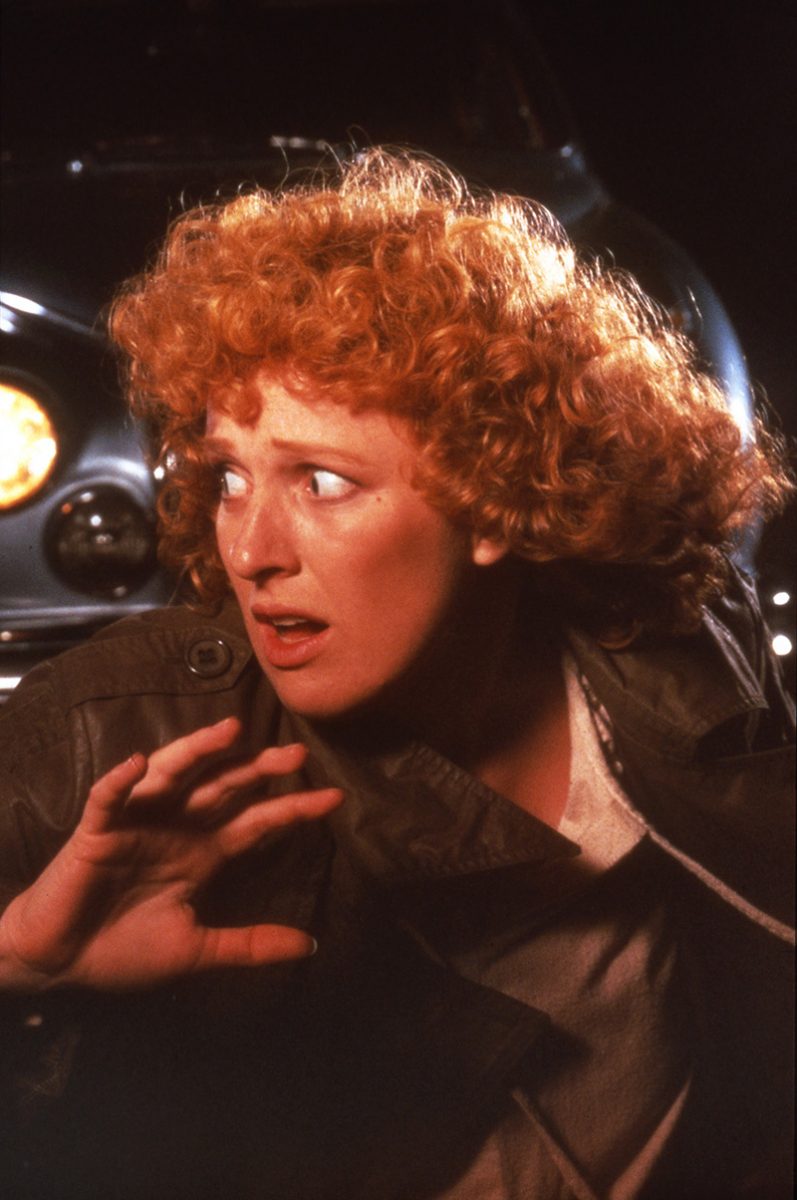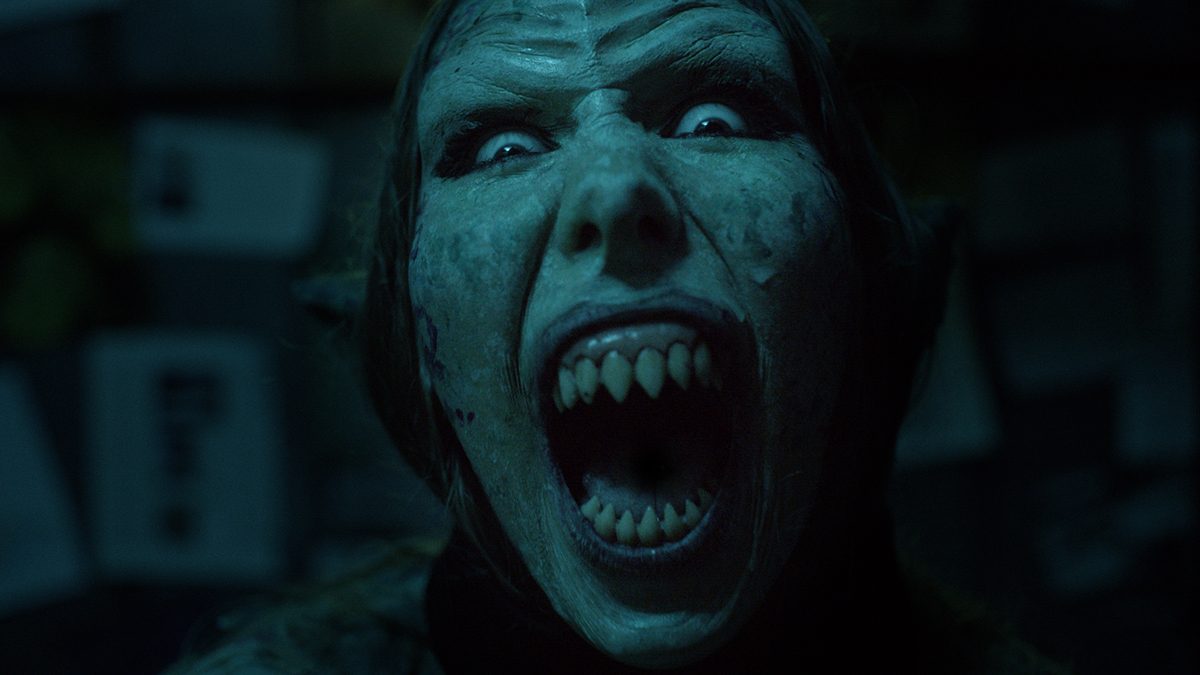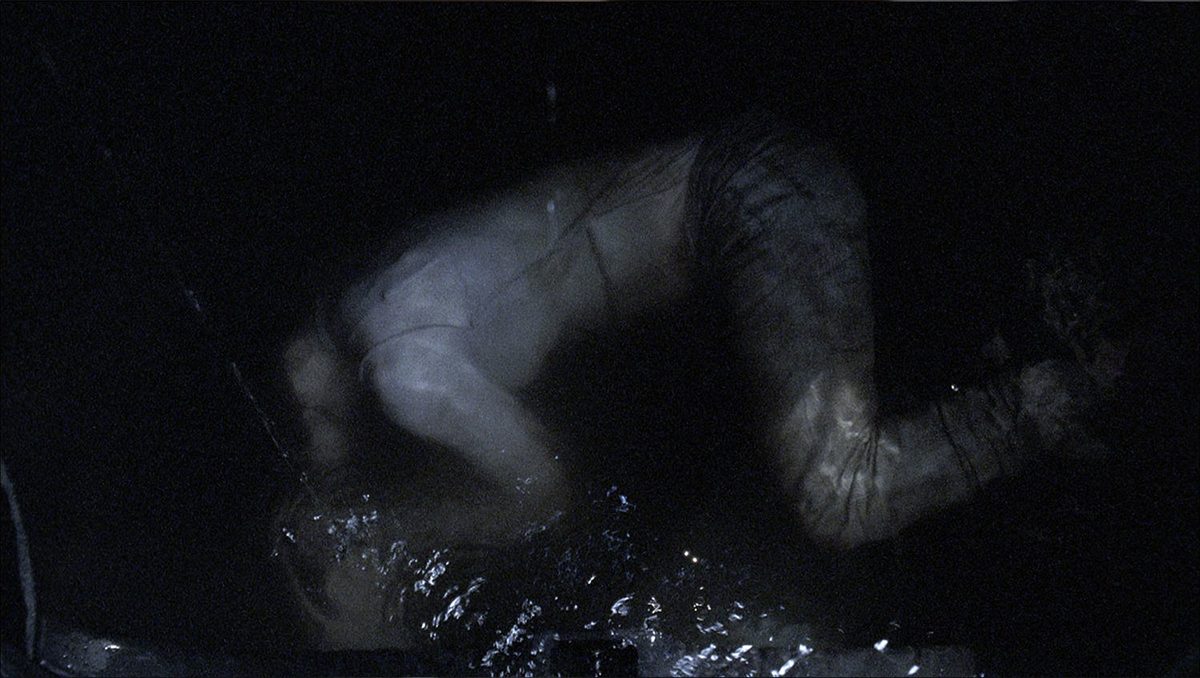In early May I flew to Hobart in anticipation of some of the most interesting dark genre programming around, at an atmospheric film festival that’s hugely supportive of women filmmakers. This was my third experience of Stranger With My Face International Film Festival, now in its fifth year (not counting a hiatus in 2015). Founded in 2012 by Tasmanian filmmakers Rebecca Thomson and Briony Kidd, Stranger With My Face focuses on horror and other genre films directed by women. The one festival of its kind in Australia, it not only provides a rare opportunity to see genre cinema from a range of thought-provoking female perspectives, but also acts as an incubator for women’s feature film projects through its intensive Attic Lab workshop for selected participants.
This year was notable for the presence of renowned New Zealand director Gaylene Preston as both featured filmmaker and mentor for the festival’s developmental Attic Lab. One of the most striking features of the two subversive Preston thrillers included in SWMF’s retrospective program—Mr Wrong (1984) and Perfect Strangers (2003)—was how resonant their commentary on sexism and gender roles remained, despite the passage of time. In a post-screening Q&A, Preston remarked on the films’ implicit feminism, “All the things you see in Mr Wrong came from a point of rage.” While there were strong films at the festival that explored themes other than misogyny, those reviewed here—bar one—contain elements of this rage. All are explorations of the perilousness of feminine archetypes: the ingénue, the ‘slut,’ the dead girl, the siren and the saint.
Mr Wrong
As Preston put it, “There’s a whole interrogation of ‘nice’” in Mr Wrong, a film about a good-natured, unworldly young woman, Meg (Heather Bolton), who buys a powder-blue Jaguar from a used-car salesman so she can drive from the city to visit her parents on weekends. Meg has a pleasant, open countenance and an Annie-like shock of red curls that suggests she hasn’t quite reached the level of urban sophistication of her city housemates. She’s softly spoken, a bit of a worrier. Despite initial reluctance to purchase the large car, she takes the wheel with a sense of optimism, underlined by the film’s jaunty opening theme. This cheerful start is disrupted on her first long drive home out of Wellington, when, drawing up for a rest break at dusk, the car silhouetted against the sea, she has a terrifying, inexplicable experience—something that’s depicted simply yet so creepily it sets us, like Meg, on edge for the rest of the journey.
Mr Wrong is gloriously multifaceted. Looked at one way, it’s a suspenseful, not particularly serious thriller, enjoyably goofy at times (as in a scene where Meg gallivants through a field in her loud jumper after romantically reconnecting with a childhood friend). From another angle, it’s artistic Gothic horror, with its vivid nocturnal cinematography and nightmarish conjuring of rain-swept roads and pale apparitions, the heroine’s face appearing half in shadow behind the wheel. What makes the film singularly compelling, however, is the constant dull murmur of sexual aggression Meg endures; something that threatens to escalate if she fails to be sufficiently ‘nice.’
The ideals of freedom and independence represented by Meg’s car and city job are undercut by the recognition that there’s no escaping harassment, be it from corporeal sexists or an increasingly malevolent vehicle. In this way, and particularly for women, Preston quite viscerally aligns Mr Wrong’s supernatural horror with everyday oppression. It’s telling that some contemporaneous reviewers failed to pick up on her subtext. In her introduction to the screening, academic Deb Verhoeven quoted from the Evening Post, which praised Mr Wrong as, “a fine film endowed with feminine intuition but free of feminist cant.” This, despite the cathartic Gothic finale, a repudiation of violence against women and demonstration of female solidarity powerful enough to reach beyond the grave.
You can watch the trailer here.
Slapper
Everything that can go wrong in Slapper [Australia, 2017], will go wrong in Luci Schroder’s unflinching portrayal of a day in the life of Taylah (Sapphire Blossom), a teenage single mother who’s desperately in need of the morning-after pill—and is broke. The ensuing race against the clock exposes the harsh, inequitable side of hetero sex, compounded by class inequality and petty indifference; no need for supernatural horror in this short drama. Moving through grey, semi-rural suburbia and various chaotic domestic situations, Taylah attempts to hustle the money in increasingly degrading, dangerous ways, trailing her young daughter in her wake.
Schroder has garnered recognition for her music video work, including for the Alpine track “Hands,” which simultaneously deploys and subverts tropes of frank female sexuality. Slapper does away with the music-video gloss but retains the frankness with Blossom’s raw, aggressive physical performance. The fact that Taylah is capable of nastiness doesn’t lessen the empathy with her situation; it just underlines her fundamental lack of agency. Schroder and co-writer Sam West maintain a constant edge of aggression in their economic, skilfully paced narrative, with the excruciating denouement denoting the hopelessness and self-perpetuating misery of systemic oppression.
The Man Who Caught a Mermaid
With this impressively assured graduate short, Kaitlin Tinker [Australia, 2017] presents another sort of suburban nightmare in her ambiguous account of a retired Australian bloke who dreams of catching a mermaid, and succeeds—perhaps. In a seamless transition from gentle whimsy to stark horror, Tinker upends the traditional myth of the siren luring men to their deaths. In so doing, she exposes the darkly constrictive effect of romantic fantasies on women. The film complements Gaylene Preston’s Perfect Strangers, which also critiques the romantic ideal.
What Happened to Her?
Perhaps the bizarrely common filmic trope of the submerged female corpse is a successor to the mermaid. Part-video essay, part-creative documentary, Kristy Guevara-Flanagan’s short film What Happened to Her? [USA, 2016] is a startling assemblage of film and TV clips demonstrating the sheer proliferation of nubile female dead bodies on our screens. There’s no identification of individual titles, but the clips derive from serious, artistic drama (Twin Peaks, True Detective) as well as forgettable forensic crime shows. On her back or face down, in the sand, in the water (of course) or exposed to the gaze of some sad-eyed (usually male) detective in the morgue, “the body” is allowed to speak here through a quiet voiceover, as an actor relays her experience playing the naked corpse (or perhaps it’s several actors, talking about several corpses; it’s hard to tell) while a seemingly inexhaustible collection of examples is displayed. To uncanny effect, she details what it’s like to be told to strip naked and float face-down in water playing dead; to have bruises painted on you by a sleazy make-up artist; to feel vulnerable in front of all-male crews; to embody a real victim on a true crime show. The voice prompts thought about all the women—fictional and real—whose murders have become an entertainment fetish.
The Book of Birdie
Not polemical so much as a transportive mood piece, Elizabeth E Schuch’s first feature, The Book of Birdie [UK, 2017], nonetheless explores an historically powerful female entity—the Christian mystic. It begins with a teenage girl placed in a snowbound nunnery by her grandmother. Played expressively by Ilirida Memedovski, Birdie has the idealised appearance of a fairytale orphan with her heavy dark hair, pale skin and enormous eyes, on which the camera dwells in close-up. Quietly watchful, she’s both childlike and otherworldly.
The hushed atmosphere of the cloister in which Birdie finds herself is enhanced by the snow falling outside. A cocoon, it magnifies the usual intensity of adolescent emotions, giving rise to extravagant visions and fancies. Two other films about adolescent girls in female-dominated institutions are brought to mind: Vardis Marinakis’ numinous Black Field (2009), set in a medieval Greek nunnery, and Dario Argento’s Suspiria (1977), with its dreamlike bizarreness and vivid use of colour.
A strikingly visual director, Schuch cleaves to various hallmarks of Gothic Romance: the cavernous stone nunnery with its elaborate spiral staircase, Catholic paraphernalia, wraiths, blood, snow, the heroine’s appearance, her innocence and mysticism. But she pushes into unexpected territory by making Birdie a source of great energy rather than a wan victim. Joy imbues her brilliantly coloured visions/hallucinations; she jokes with ghosts, falls in love with the groundsman’s daughter and moves through the convent beatifically. Seizing all the imagery at hand in this austere environment, she devises idiosyncratic rituals incorporating Catholic iconography, superhero comics, menstrual blood and—most disturbingly—a miscarried foetus. Through her rituals, Birdie can gain power over female bodily pain and possible past trauma by creatively transforming them into something transcendent.
Sadly, though, Catholicism places inevitable limitations on its mystics; Birdie must eventually confront the impossibility of merging spiritual and corporeal worlds—though not before offering a glimpse of an alternative approach.
It was invigorating, as always, to see distinctive filmmakers at Stranger With My Face shining such personal light on female experience, challenging the dominant narrative through captivating, angry, inspired, artistic works from past and present.
–
Stranger With My Face International Film Festival 2017, Director Briony Kidd, Salamanca Arts Centre, Hobart, 4-7 May
Top image credit: What happened to her?






